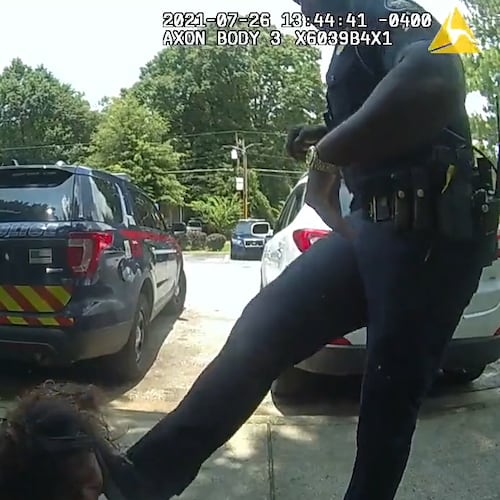Sandy Springs officially has a slum.
The City Council declared this on Tuesday night, after more than an hour of debate, comments and occasional disruptions from the standing-room only crowd.
“You shouldn’t feel something bad has happened here,” councilman Chip Collins told the crowd. “This should make you proud of your city.”
The city’s argument was outdated terminology was a needed step for the city to apply for the south Roswell Road area to become an Opportunity Zone.
To residents, it also meant that they are now stigmatized as the dilapidated area of a city that, just two months ago, was named the ninth-most affluent in the nation.
“I am not against redevelopment,” said Jan Rabinowitz, an Osner Drive resident. “But why should our neighborhood and community be branded as dilapidated, blighted and a slum to meet the requirements of this program?”
City staff presented the plan two weeks ago, as a way to spur redevelopment along Roswell Road. The bulk of the area proposed was south of Interstate 285, highlighting a north-south divide in a city with $300,000 homes in neighborhoods to the south and multi-million dollar mansions to the north.
Officials said it was a paperwork issue that required creating the redevelopment borders by calling the area – Roswell between Mount Vernon Highway Highway and Long Island Drive – blighted and a slum.
The city tried to defuse the situation on Tuesday night, removing all owner-occupied condos and town homes from the proposed Opportunity Zone.
In a 4-2 vote, the council approved the redevelopment area by also truncating the boundaries, to extend south only to Glenridge Road.
The two dissenting council members – Dianne Fries and Tibby DeJulio – had wanted the original boundaries.
“We have 18 percent of our population making more than $200,000 a year,” DeJulio said in reference to a recent ranking by Porfolio.com. “Yet we have Roswell Road full of pawn shops and liquor stores because no one will redevelop it.”
The city was able to create the redevelopment area because a sole census block, just south of Interstate 285, had more than 15 percent of its people at or below poverty in 2000.
Few people expect that level to be as high in the 2010 Census, because large apartment complexes in the area were demolished and owners began rehabbing other properties there.
Council members tried to acknowledge that in their vote. The motion to create the redevelopment zone talked around required language of blight, slum and general distress.
Instead, the council said the redevelopment area met the requirements of those words.
Still, the designation of a slum will remain on the books for the Opportunity Zone application. It will be up to the state Department of Community Affairs to approve that request, which could come later this year.
Several other metro Atlanta cities have Opportunity Zone designations. For instance, Norcross is involved in the program to encourage job growth along Buford Highway.
The program does not award any money. Rather, it offers a state-tax credit of up to $3,500 for new full-time jobs created in the zone.
About the Author
The Latest
Featured
